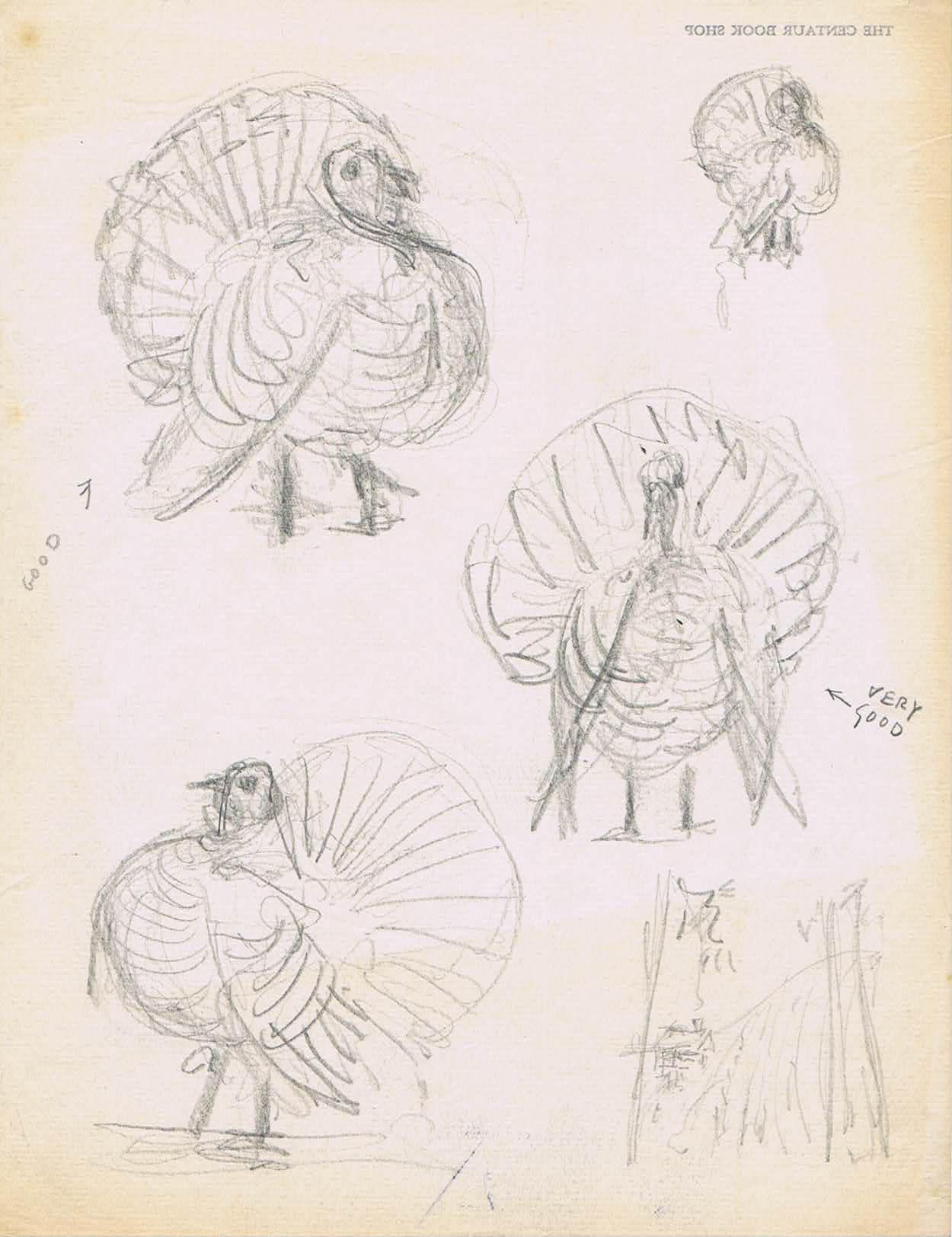Early in his career, Wharton frequented Philadelphia’s Centaur Bookshop. He collaborated with the Press to produce woodcuts for some of their publications including Walt Whitman’s Song of the Broad-Axe (1924), D.H. Lawrence’s Reflections on the Death of a Porcupine (1925) and The Song of Solomon (1927). Wharton also drew “pages and pages of centaurs, more and less abstract, playing with form over and over again” and also produced several woodcuts of the shop’s exterior. He even created a sign for the bookshop; a centaur with a wooden body and iron legs which is on display here at the museum.
Thomas Caldecot Chubb (1899-1972) wrote a poem called “Turkey Gobbler Land” that was

Wharton’s sketch for the woodcut used on the header of the broadside. Note Chubb’s note that says: “This is the one to use. It is swell. T.C.C.”
printed as a broadside by Centaur Press. The poem first appeared in “POETRY: A Magazine of Verse”, August 1934. Thomas Caldecot Chubb was the son of an insurance executive, but chose to pursue his love of writing and not the family business (just like Wharton did with art)
and he became a published poet and author. Chubb served in the Naval Reserve in World War I and in the office of Strategic Services in World War II, he supported himself as a writer for most of his adult life. Chubb’s list of publications include biographies on Dante, Boccaccio and Aretino and histories for young readers on the Byzantines, Venetians and Vikings as well as several collections of poetry.
Harold Mason, owner of the Centaur Book Press, asked Wharton to illustrate the poem for the broadside. Thomas Chubb corresponded with Mason about sketches Wharton had produced for the poem that would be turned into woodcuts. Chubb wrote to Mason:
“I am very much taken with the larger drawing which shows pine trees, rows of corn, a strutting gobbler with feeding hens behind him and a distant view of a negro shack…I hope you will ask Mr. Esherick not to change it in any way, except of course insofar as is necessary in developing a pencil sketch into a finished work. It is as if he had read my mind.”
Pictured in this blog post you can see the poem published in poster form, and the two woodcuts Esherick produced for this work (at the top left). Chubb returned the sketches to Wharton so he could create the woodcuts, and included some notes on them. He commented on the turkeys in the field: “This is the one to use. It is swell. T.C.C.”, and on a page full of turkey sketches he ranked them as “good” and “very good”. Here you can see Wharton’s sketches and Chubb’s comments, made on stationary from The Centaur Book Shop.
Happy Thanksgiving!
Post by Laura Heemer.







